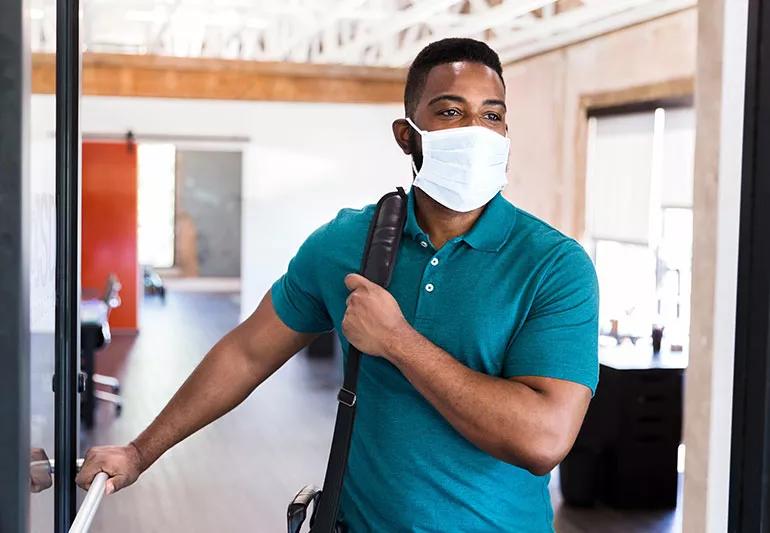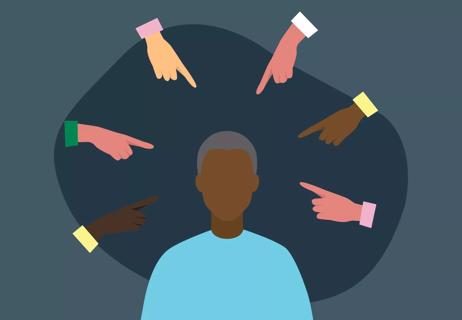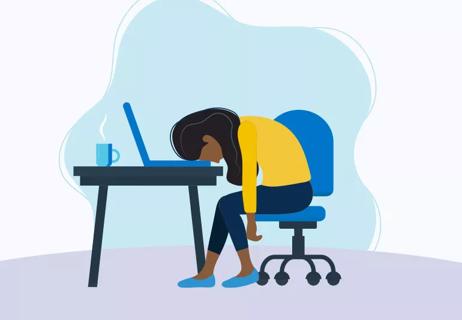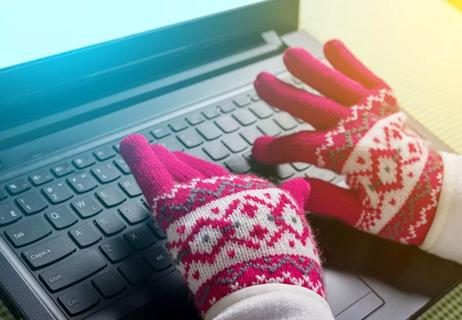Try these helpful techniques from a psychologist

Office life has its own set of perks and challenges. The perks — seeing your favorite coworkers, scoring free treats in the kitchen and just having a place where you can focus on your job-related responsibilities. The challenges — encounters with those coworkers who like to overshare, crusty coffee mugs in the sink that no one wants to wash or that one person who insists on microwaving fish every other day. Hey, that’s just office life.
Advertisement
Cleveland Clinic is a non-profit academic medical center. Advertising on our site helps support our mission. We do not endorse non-Cleveland Clinic products or services. Policy
When it was taken away from us last year, some were fine with the change and others had a rough time adjusting. But as the pandemic raged on, one thing became clear: Despite the craziness swirling around us, our homes were the one place where we could feel safe.
If you have a return to work date looming over your head, you might be struggling with the thought of having to leave the safety of home to go work in an environment that’s filled with so many uncertainties. Fortunately, psychologist Susan Albers, PsyD, has some helpful tips for making the transition back to work during the pandemic less stressful.
It’s not weird to feel apprehensive about returning to work. According to Dr. Albers, it’s normal considering we’ve been safe in our pods for so long. If you’re worried, what you’re experiencing is called “reentry anxiety” and there are two forms of it.
“The first form concerns safety. People are anxious that when they leave their house, they may unknowingly contract COVID-19 or possibly spread it. The second type is around social interactions. Over the past year, we have been social distancing and lost practice of how to meet with people in person, look them in the eyes and engage in everyday chitchat.”
Advertisement
She adds that anxiety can be good in certain situations. But when it becomes too much, anxiety can be paralyzing.
“A little bit of anxiety is okay. It helps motivate you. For example, if you’re going to take a test, having a little bit of anxiety is helpful because it motivates you to study. Too much anxiety shuts you down and you become isolated. Sometimes, you can’t even function.”
Dr. Albers recommends walking through scenarios that you might encounter at work to help you feel more at ease. “Imagery is powerful in helping people to cope with anxiety-filled situations. When you do this, it’ll help you gear up emotionally.”
She also suggests doing a dry run before your official return to work date.
“Don’t jump right in. Put your toe in the water. Go back to your office before your official start date. Look around. Sit in your chair. Remember that a lot has changed in a year, so expect that things are not going to look or feel like they did a year ago.”
And while you’re there, you might as well spruce up your workspace.
“If your office has been vacant for a year, it may need some refreshing or cleaning. When you do your dry run, take some cleaning products with you and spend some time getting your space ready. Add some new pictures and make it look nice and pleasant. A pleasing, clean and organized environment is good for your mental health. Being in one can also help reduce your stress level, particularly your cortisol hormone level (the stress hormone).”
She adds that greening up your space might help, too.
“Bring a plant to work. Research indicates that plants help reduce stress levels at the office and increase productivity by 15%.”
When you look good, you feel good. And while that salsa-stained sweatshirt and those well-worn leggings are comfy, you know that you stand a little taller and feel more confident when you’re wearing a sharp outfit.
Dr. Albers says there are even studies to show that work attire makes us feel more confident and professional. “The right wardrobe can help you transition back into your role. Consider buying a new outfit or refreshing your wardrobe a little by adding pieces that make you feel comfortable.”
Not having a commute made it easier for you to take a snooze cruise until a few minutes before you were scheduled to start your workday. On the other hand, managing family life might have pushed your workdays late into the night. Well, the good thing about going back to work is that you’ll have a normal day again. Make sure you’re well-rested so you’re not nodding off in those in-person meetings.
Dr. Albers explains.
“During the pandemic, staying up late and sleeping in was the norm. Getting to work at a specific time may be a shock to the schedule. Work on establishing a routine bedtime and get that in place before returning to work. Seven to nine hours of sleep has been shown to help people be more productive. Getting enough sleep can also reduce emotional eating and buffer you emotionally and physically against the wear and tear of stress.”
Advertisement
We all work with some wild cards. And when you see maskless group shots or COVID-19 conspiracy theories posted by coworkers on social media, it stinks to know that you’ll be working closely with people who haven’t been practicing pandemic safety protocols. It’s also tough when you don’t trust your employer’s commitment to safety.
Dr. Albers stresses that you need to communicate your concerns in these cases.
“With your work environment, be sure to spell out what your expectations are and ask for your employer’s COVID-19 safety policy. Be sure to thoroughly read the policy. Your employer must follow the established safety protocols. If they don’t, you can point to the document and say, ‘Here it specifies that cleaning will take place,’ and ask any question you may have. Keep in mind that you don’t want to be combative when you have this conversation. Just make it clear that safety on the job is very important to you. Your safety is key and you don’t have to apologize for that. “
You don’t have to feel helpless if leadership is lax about COVID-19 safety protocols. Instead, Dr. Albers recommends taking safety into your own hands. Even if it is not a policy, keep wearing your mask and have hand sanitizer at your desk to protect yourself.
Advertisement
“It’s OK to continue to add space and distance. However, it’s important to practice what you’ll say if someone steps into your space before it happens,” Dr. Albers says.
Remember how you say it is just as important as what you say. People genuinely may not realize they are stepping into your space. A gentle reminder can help. You can do this by saying, ‘I’m still social distancing,’ and take a step back. You can also create physical distance with your body language and objects. Stand behind your desk, move your chair farther away or reorganize your environment to give you more space, she advises.
Many employers have put hybrid work models in place. Others are letting employees decide if they want to work from home for good or come in from time to time. Some people aren’t so fortunate. They have to work on-site and there’s no flexibility. In cases like these, Dr. Albers says to find the positives where you can.
“Remember the upside and be honest with yourself about how you are feeling. Take inventory of what you are struggling with. Is it leaving your kids, feeling safe or having a schedule again? Deep down, figure out what is at the heart of your concerns. Then, think about what you have learned from working from home and figure out what you want to continue to do outside of work once you return. It might be spending more quality time with your family or getting outside regularly. Also, think about the space you’ll regain by not working at home. For example, your dining room table won’t be covered with work papers anymore or your guest room can be a guest room again instead of an office.”
If you’re experiencing extreme anxiety or unable to complete daily tasks after returning to work, Dr. Albers encourages you to talk to a mental health professional.
“This year has been traumatic for everyone. It’s no surprise that returning to work may trigger preexisting conditions such as depression, anxiety or PTSD. If you’re struggling, be sure to reach out to a mental health professional.”
Advertisement
Learn more about our editorial process.
Advertisement

Decide what you’re OK sharing, respect others and speak up if you feel uncomfortable

From ‘Sunday scaries’ to microaggressions, you can learn to navigate your workplace woes

You deserve peace of mind in your workplace

A hostile work environment can be harmful to your health and wellness

Putting in long hours at work can be bad for your health

Fix your work-from-home woes

The battle over the thermostat rages on

Type 2 diabetes isn’t inevitable with these dietary changes

Applying a hot or cold compress can help with pain